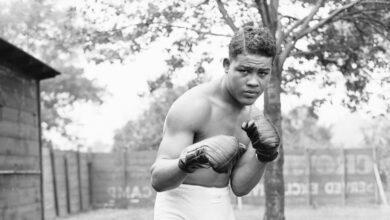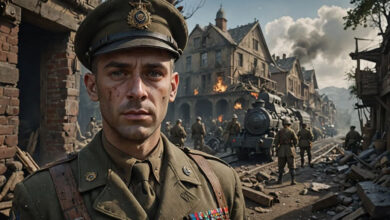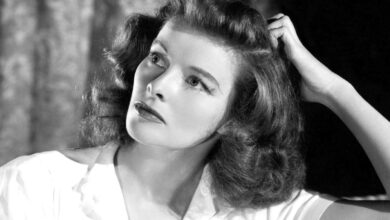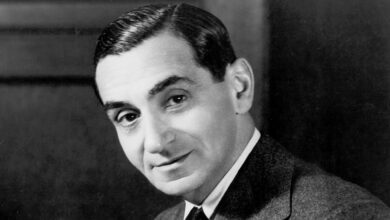“All the world is birthday cake, so take a piece, but not too much.” – George Harrison
Podcast: Play in new window | Download
Subscribe: Spotify | Amazon Music | Youtube Music | RSS
Born on 25 February 1943, in Liverpool, England, George Harrison was the son of a bus conductor called Harold and a shop assistant called Louise. He and his three siblings, Louise, Harry and Peter likely had no idea when they were growing up, though, that he would go on to be considered one of the greatest guitarists of all time and become part of a band that would be one of the most popular music inspirations of the 20th – and even the 21st century.
Until he was six years old, George Harrison lived on the same dead-end street where he was born. His home was a terraced house in Wavertree, Liverpool which had an outside toilet and a single coal fire with no central heating. George attended Dovedale Primary School, and then Liverpool Institute High School for boys. Discovering a love of music at a young age, George was influenced by the likes of Cab Calloway, George Formby, and Carl Perkins and so it came as a disappointment that his school didn’t have any guitars. His disappointment was overcome, though, when in 1956 his father bought him a Dutch Egmond acoustic guitar. A friend of his father’s taught him to play it and he soon formed a skiffle band called the Rebels with his brother Peter and a friend called Arthur Kelly. Soon after he met someone else on the bus to school with whom he would bond and share his love for music; Paul McCartney. McCartney introduced George to his friend John Lennon and he auditioned for a place in their skiffle band, the Quarrymen, which would later evolve into one of the biggest bands in history. The Beatles.
George Harrison’s career would span nearly 40 years of active music production and several years in film production and he contributed at least two original pieces of music for every album that the Beatles released. This undersung hero of the Beatles has become known as “the quiet guitarist” due to his unassuming mannerism but he composed some true classics including his most famous work by far while he toured with the Beatles – “Something”, which became the Beatles’ second most-covered piece of music.
It was through his George Harrison’s experience and love of Hindu mythology and Indian music that he helped lead The Beatles towards their shift into folk rock and then later into Indian classical music. This unique blending of Indian music and European rock produced some of the greatest hits the Beatles ever had and its uniqueness helped establish George Harrison as an innovator musical innovator.
On 21 January 1966, George Harrison married the model Pattie Boyd whom he had met during the production of the Beatles’ movie A Hard Day’s Night in 1964 when she was 19. The couple split after eight years and divorced in 1977.
When the breakup of The Beatles eventually came in 1970 it didn’t stunt or even slow down George Harrison’s artistic career in the least and he went on to achieve some of his greatest work. Some of these included his first album after the breakup “All Things Must Pass” and contained within that album was his most popular piece of stand-alone music, the song “My Sweet Lord”.
George Harrison used his fame, wealth, and musical talents to help humanity in any way he could and the first charity concert he contributed to was in 1971 where he played for the first time with Ravi Shankar. This initial charity concert, called “Concert for Bangladesh” was actually the first of many that he would participate in as it later evolved into the ultimate benefit concert of the 1980’s, “Live Aid”.
On 2 September 1978, George Harrison married a secretary from Dark Horse Records called Olivia Trinidad Arias and they had a son together called Dhani. They lived in an old English manor house which Harrison had restored in Henley-on-Thames and ten people had to be hired just to maintain the 36-acre garden. His musical career at this point started to slow down as he preferred to spend more of his time with his family.
In the late eighties, though, he started a group called “The Traveling Wilburys” with Roy Orbison, Jeff Lynne, Bob Dylan and Tom Petty. The group met in Dylan’s garage to record their music and they released two albums under pseudonyms, titled “Traveling Wilburys Vol 1” and mischievously, “Traveling Wilburys Vol 3”, which was recorded by the group as a four-piece following Roy Orbison’s death in December of 1988.
In 1994, George Harrison collaborated once again with Paul McCartney and Ringo Starr and along with the help of Jeff Lynne, the Beatles Anthology project came into being with the group releasing two new singles, their first since they had split in 1970. “Free as a Bird” was released in December 1995 and in March 1996, they released “Real Love”, but Harrison refused to work on a third. He would appear again later though playing guitar on two tracks of Ringo Starr’s album “Vertical Man”.
George Harrison was diagnosed with throat cancer in 1997, which he blamed on a life of heavy smoking. He underwent radiotherapy which appeared to be successful. On 30 December 1999, he was attacked in his home by an intruder who was fought off by his wife Olivia but not until George had received more than 40 stab wounds, for which he was hospitalised.
In May of 2001, George had a cancerous growth removed from one of his lungs and was then treated in July in Switzerland for a brain tumour. On 12 November the same year, Harrison, Starr and McCartney were together for the last time as three weeks later on 29 November 2001, at the age of 58 George Harrison died.
His legacy is one that will live on forever in the hearts and minds of people who have heard his music and been touched by his kindness, his generosity, and his love for mankind. George Harrison was buried in the Hindu tradition, having his ashes cremated and spread into the Ganges and the Yamuna rivers of India.
Podcast: Play in new window | Download
Subscribe: Spotify | Amazon Music | Youtube Music | RSS
George Harrison Recommended Reading
 Cherished by fans and collectors, I Me Mine is the closest we will ever come to George Harrison’s autobiography. This new edition has been significantly developed since the 1980 original; now printed in colour, and with previously unseen archive material, the book covers the full span of George Harrison’s life and work. Featuring George Harrison in conversation with Derek Taylor, I Me Mine delves into everything from Harrison’s upbringing in Liverpool and the growth of early Beatlemania, to his love of India, gardening and racing cars.
Cherished by fans and collectors, I Me Mine is the closest we will ever come to George Harrison’s autobiography. This new edition has been significantly developed since the 1980 original; now printed in colour, and with previously unseen archive material, the book covers the full span of George Harrison’s life and work. Featuring George Harrison in conversation with Derek Taylor, I Me Mine delves into everything from Harrison’s upbringing in Liverpool and the growth of early Beatlemania, to his love of India, gardening and racing cars.
With over fifty archival photos, Harrison’s words, and his song lyrics, this book offers an insight into the musician’s life, work and philosophy.I Me Mine – The Extended Edition presents the lyrics to 141 George Harrison songs, with handwritten lyrics beautifully reproduced in facsimile, accompanied by Harrison’s uniquely intimate and humorous commentary. This edition has been expanded to include 59 new songs; as well as tracks written for The Beatles, it also contains lyrics from Harrison’s solo career, including his albums All Things Must Pass and Brainwashed.
I Me Mine – The Extended Edition presents for the first time a complete compendium of Harrison’s musical career and his writing. With written contributions from Olivia Harrison and Derek Taylor, original cover art by Shepard Fairey, and a wealth of previously unpublished material, the new edition of I Me Mine is a treasured portrait of George Harrison and his music.






